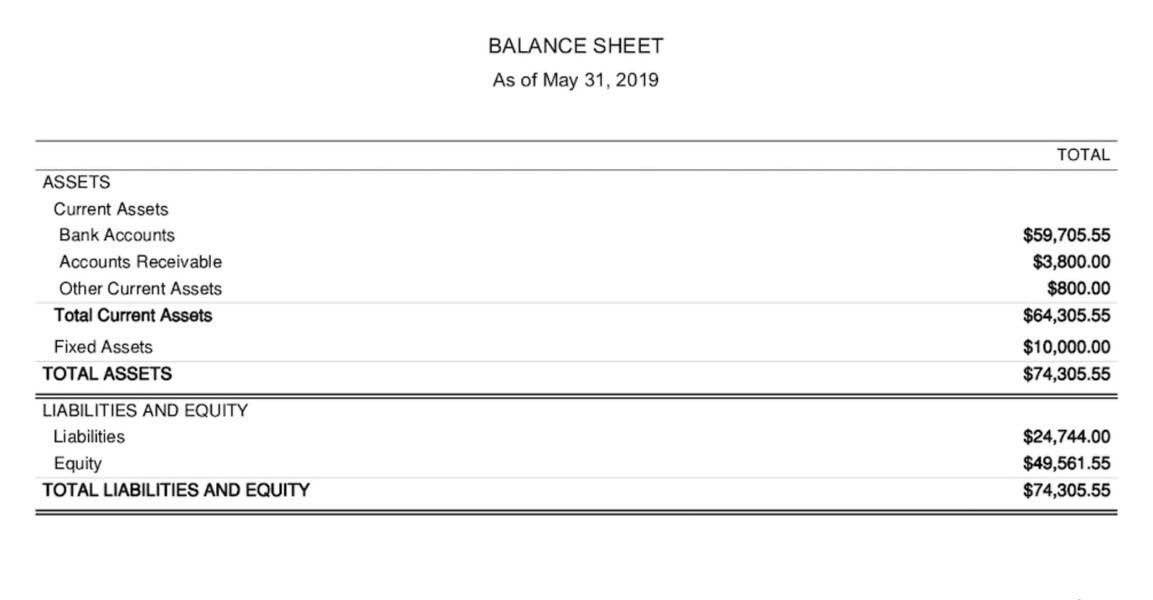
By transferring the balances of temporary accounts to permanent ones, closing entries ensure that each accounting period starts afresh, free from the residual effects of the previous period. This clean slate is crucial for accurate financial analysis and decision-making, as it allows stakeholders to compare performance across different periods without the noise of past transactions. Also known as real or balance sheet accounts, these are general ledger entries that do not close at the end of an accounting period but are instead carried forward to subsequent periods .
- We need to do the closing entries to make them match and zero out the temporary accounts.
- Since QuickBooks automates the year-end close, you don’t have to get caught up with all of these manual entries unless something was to go wrong.
- So, if the closing entries journal is not posted, there will be incorrect reporting of financial statements.
- Utilizing accounting software like QuickBooks or Xero can also help automate and streamline this process, reducing the likelihood of human error.
- The income summary account then transfers the net balance of all the temporary accounts to retained earnings, which is a permanent account on the balance sheet.
Example of a Closing Entry
If there is a net loss, the income summary account is also closed, with the income summary account being credited and the capital account being debited. When the credit balance of the revenue account and the debit balance of the expenses account are transferred to the summary account, the account’s balance is either net income or closing entries a net loss. A business will use closing entries in order to reset the balance of temporary accounts to zero.
Can Sophisticated Accounting Software Simplify the Process of Closing Entries?
This continuity is essential for assessing trends and making informed decisions about investments, financing, and operations. Closing entries also help businesses comply with tax regulations, such as those outlined in the Internal Revenue Code (IRC), by ensuring that reported taxable income is accurate. Resetting temporary accounts ensures that tax filings reflect the correct income and expenses, reducing the risk of penalties or audits. Now when the curtain falls, closing entries waltz in for the finale – they’re the stagehands who reset everything after the performance. By closing out revenue and expense accounts, they prep the books for the new accounting period, making sure you’re not mixing scenes from two different plays.

Accounts Payable Solutions

Imagine applying the power of fintech to transform the tedious chore of closing entries into a sleek, automated process. With the advent of cutting-edge accounting software, the laborious task of manual tallying is becoming a thing of the past. These sophisticated tools use advanced algorithms to categorize income and expenses, match transactions, and prepare the closing entries with precision – all with just a click and at the speed of electrons. As you wave goodbye to the accounting period, you, the business owner, must reconcile any withdrawals.

It begins with aggregating all financial transactions recorded during the period, ensuring the ledger is up-to-date. Once verified, the trial balance is prepared to confirm that debits and credits are balanced, highlighting any discrepancies that need resolution. Closing entries are essential in financial accounting, marking the transition from one accounting period to the next. They reset temporary accounts and maintain accurate records, providing clarity on an organization’s financial health. Permanent Account entries show the long-standing financial position of a company.
- Book a 30-minute call to see how our intelligent software can give you more insights and control over your data and reporting.
- Download our data sheet to learn how to automate your reconciliations for increased accuracy, speed and control.
- According to best practices outlined on learning platforms including Investopedia, the balance is moved to Retained Earnings, reducing the account by the total dividends paid.
- When it comes to auditing and compliance, accurate closing entries aren’t just important, they’re the linchpin of financial integrity.
- Performing reconciliations throughout the year can ease the burden at year-end and help catch issues early.

Closing entries represent a crucial step in the accounting cycle – the standardized sequence of accounting procedures used to record, classify, and summarize financial information. Within this cycle, closing entries come after preparing financial statements and before creating a post-closing trial balance. They bridge the gap between one accounting Sales Forecasting period and the next, ensuring that temporary accounts start fresh while permanent accounts carry forward their ending balances.
- The trial balance is like a snapshot of your business’s financial health at a specific moment.
- If the subsidiaries also use their own subledgers, then their subledgers must be closed out before the results of the subsidiaries can be transferred to the books of the parent company.
- Without transferring funds, your financial statements will be inaccurate.
- It’s a delicate balance that corporations must manage – supporting growth and rewarding investment, all shown transparently thanks to closing entries.
- In the next accounting period, these accounts usually (but not always) start with a non-zero balance.
- If there is a net profit, the balance of the income summary account is also zeroed by debiting the income summary account and crediting the capital account.
Prepare the closing entries for Frasker Corp. using the adjustedtrial balance provided. Printing Plus has a $4,665 credit balance in its Income Summaryaccount before closing, so it will debit Income Summary and creditRetained accounting Earnings. If both summarizeyour income in the same period, then they must be equal. The month-end close is when a business collects financial accounting information.
- Navigating the realm of closing entries in such instances is crucial for accurate financial reporting, and for those delving deeper, exploring a comprehensive list of FAQs on the subject might prove beneficial.
- This is closed by doing the opposite – debit the capital account (decreasing the capital balance) and credit Income Summary.
- In this context, a well-maintained FAQ section can be a valuable resource for those new to these concepts, ensuring they understand the impact of these transactions on owner’s equity.
- Having an intermediate income summary account proves helpful to the accountant here as it provides a trail of accounting closing entries for each financial transaction.
- To prepare for a new accounting period, all individual expense accounts (such as rent, salaries, utilities, etc.) must be closed.
- However, some corporations use a temporary clearing account for dividends declared (let’s use « Dividends »).
Recording a Closing Entry
All these examples of closing entries in journals have been debited in the expense account. At the end of the accounting year 2018, the expense account needs to be credited to clear its balances, and the Income summary account should be debited. This document establishes a clean starting point for the next accounting period, ensuring all accounts are balanced.
The company earned a net income of $20,000, calculated as $50,000 in revenue minus $30,000 in expenses. An accounting year-end which is not the calendar year end is sometimes referred to as a fiscal year end. Then, just pick the specific date and year you want the closing process to take place, and you’re done!
Laisser un commentaire